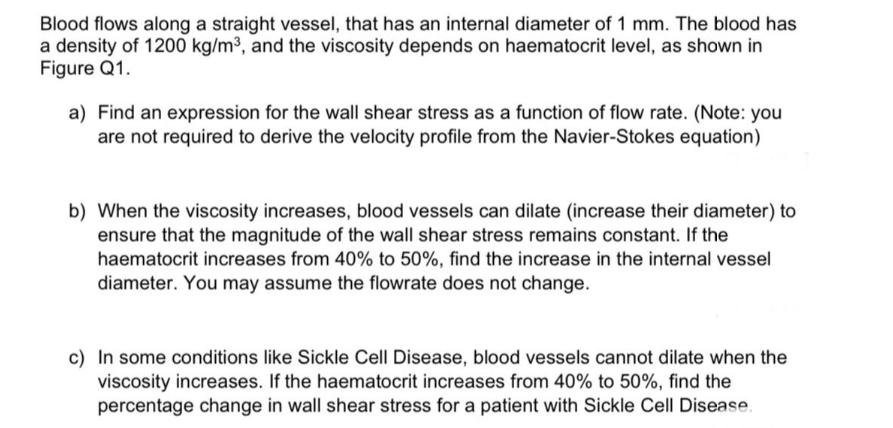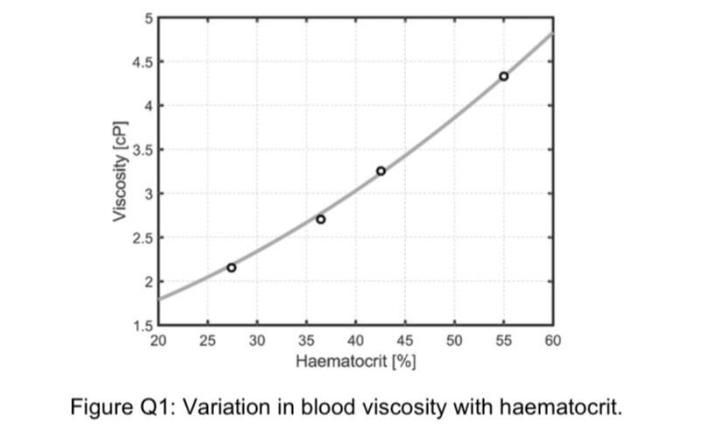Answered step by step
Verified Expert Solution
Question
1 Approved Answer
Blood flows along a straight vessel, that has an internal diameter of 1 mm. The blood has a density of 1200 kg/m, and the


Blood flows along a straight vessel, that has an internal diameter of 1 mm. The blood has a density of 1200 kg/m, and the viscosity depends on haematocrit level, as shown in Figure Q1. a) Find an expression for the wall shear stress as a function of flow rate. (Note: you are not required to derive the velocity profile from the Navier-Stokes equation) b) When the viscosity increases, blood vessels can dilate (increase their diameter) to ensure that the magnitude of the wall shear stress remains constant. If the haematocrit increases from 40% to 50%, find the increase in the internal vessel diameter. You may assume the flowrate does not change. c) In some conditions like Sickle Cell Disease, blood vessels cannot dilate when the viscosity increases. If the haematocrit increases from 40% to 50%, find the percentage change in wall shear stress for a patient with Sickle Cell Disease. Viscosity [CP] 5 4.5 4 3.5 3 2.5 2 1.5 20 25 30 40 45 50 55 60 Haematocrit [%] Figure Q1: Variation in blood viscosity with haematocrit. 35
Step by Step Solution
There are 3 Steps involved in it
Step: 1

Get Instant Access to Expert-Tailored Solutions
See step-by-step solutions with expert insights and AI powered tools for academic success
Step: 2

Step: 3

Ace Your Homework with AI
Get the answers you need in no time with our AI-driven, step-by-step assistance
Get Started


